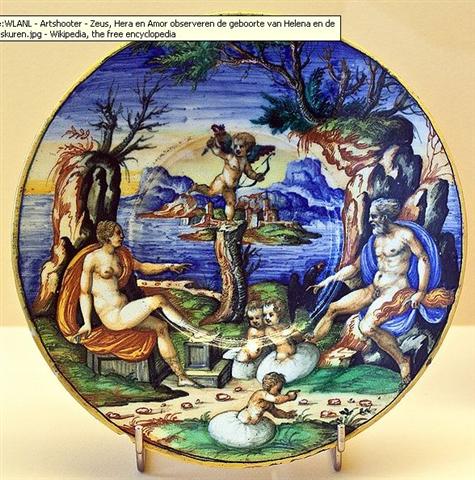|
1. There are 2 manu rere at or preceding Castor:
Possibly it means Castor is represented only by ihe tau in Ga2-20 and that the preceding pair of manu rere correspond to Helen of Troy and Clytemnestra: ...In Greek and Roman mythology, Castor and Pollux or Polydeuces were twin brothers, together known as the Dioscuri. Their mother was Leda, but Castor was the mortal son of Tyndareus, king of Sparta, and Pollux the divine son of Zeus, who visited Leda in the guise of a swan. Though accounts of their birth are varied, they are sometimes said to have been born from an egg, along with their twin sisters Helen of Troy and Clytemnestra ... My idea came when I noticed that parallels in other texts began not until ihe tau (excepting K of course which is running in parallel with G all the way):
If Pollux should be at manu rere in Ga2-22, then Castor could be at ihe tau in Ga2-20, and the preceding pair of birds could represent Helen of Troy and Clytemnestra.
(Dutch majorica, 1550) 'Zeus, Hera, and Amor observe the birth of Helen and the Dioscuri' it says in the Dutch language. The birth of Clytemnestra is not depicted, maybe because of her character: "In the Oresteia by Aeschylus, she was a femme fatale who murdered her husband, Agamemnon - said by Euripides to be her second husband - and the Trojan princess Cassandra, whom he had taken as war prize following the sack of Troy; however, in Homer's Odyssey, her role in Agamemnon's death is unclear and her character is significantly more subdued." (Wikipedia) Castor could be the little boy at left and Pollux the one at right, which agrees with the order in which they are mentioned. Moreover, the little boy at right is closer to Zeus. |
||||||||||||||||||||||||||||||||||||||||||||||||||||||||||||||||||













